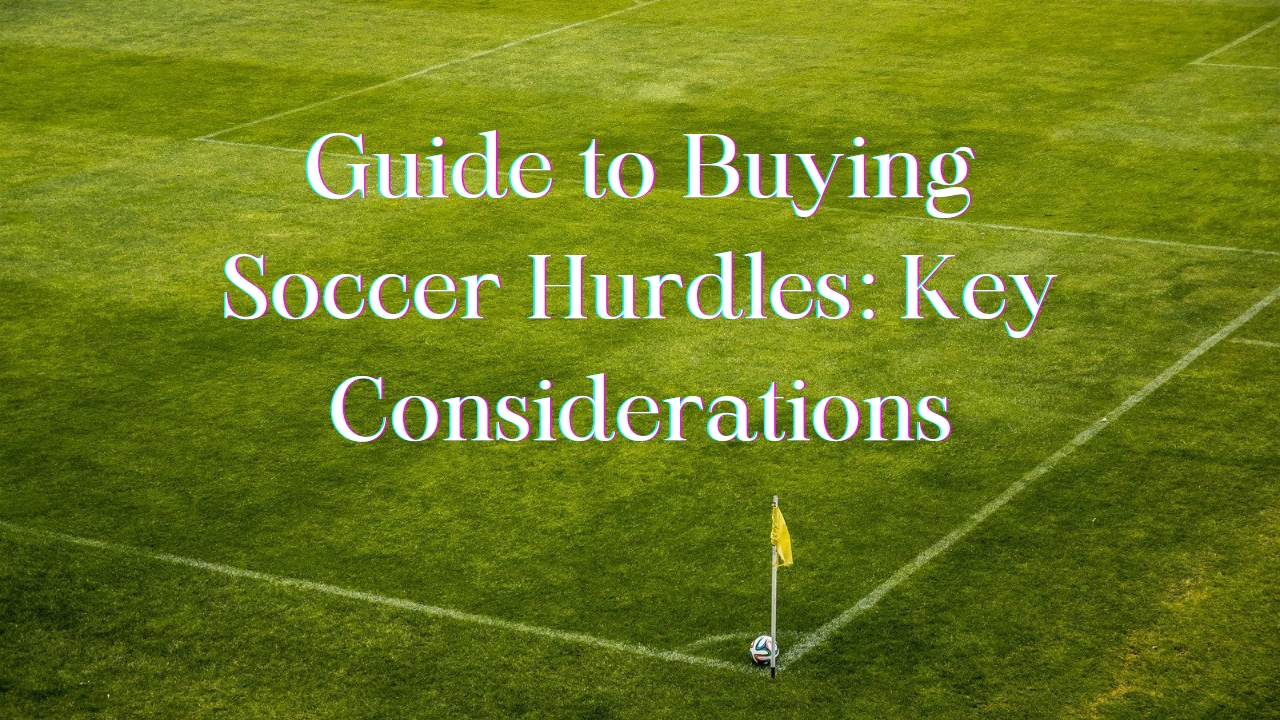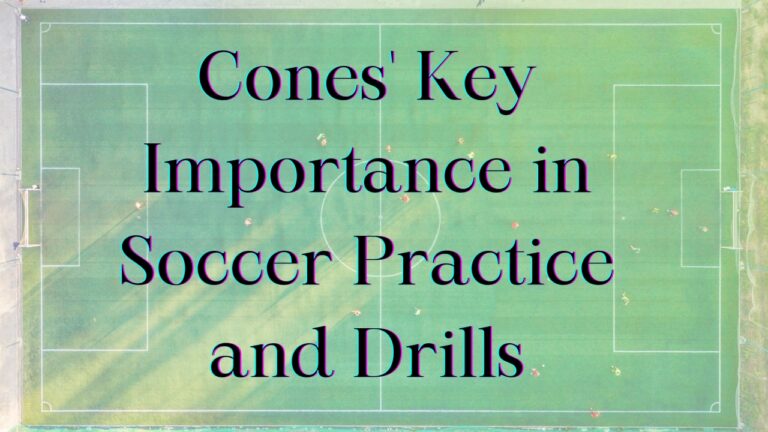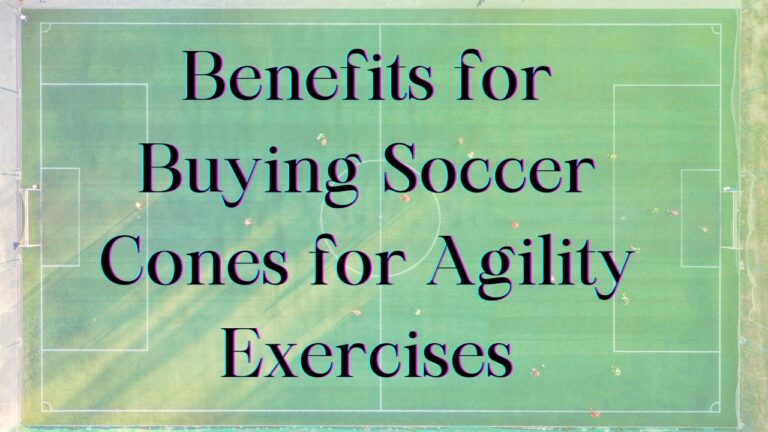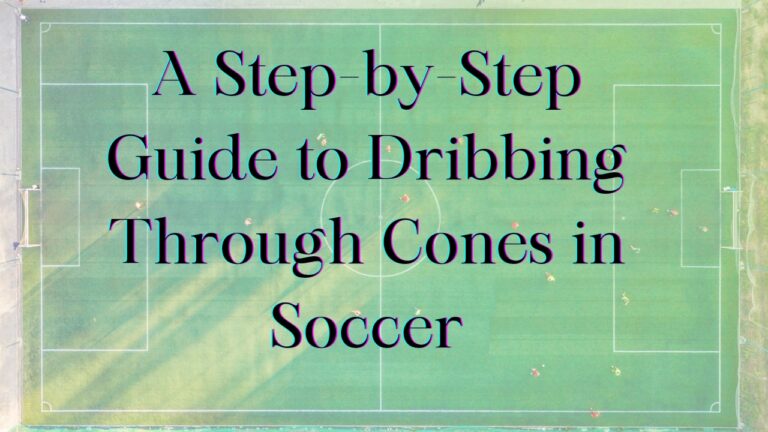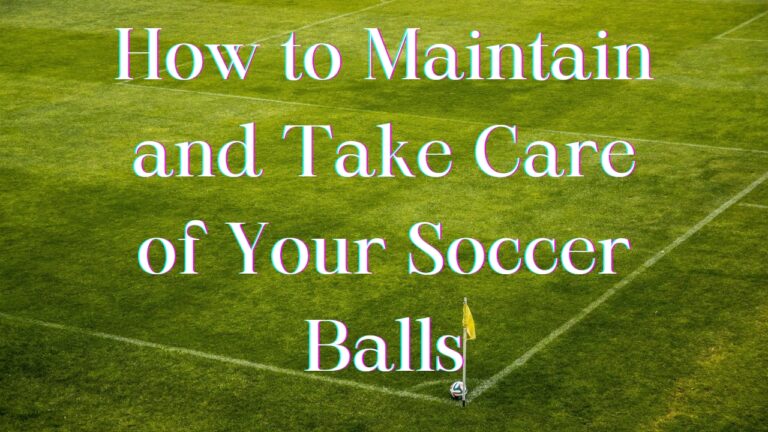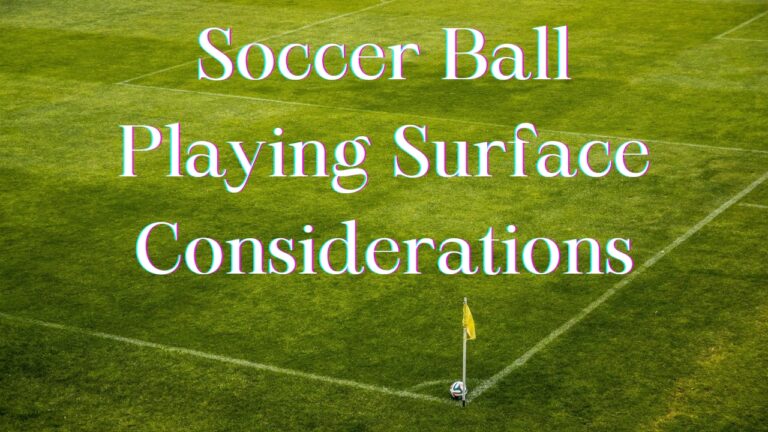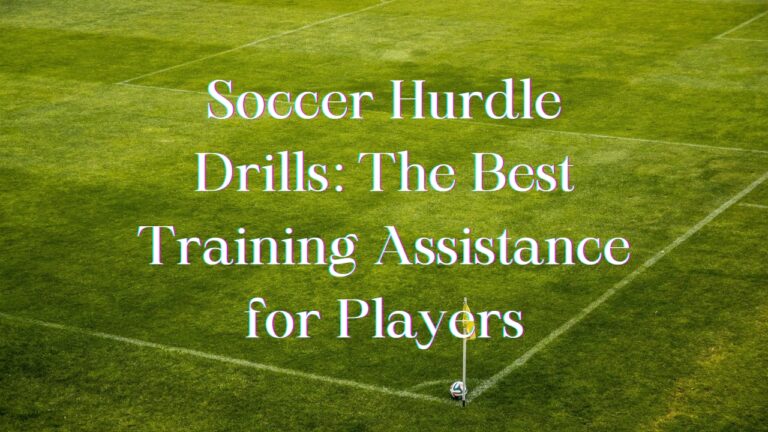Are you looking to take your soccer training to the next level with the addition of hurdles? Investing in a quality set of hurdles can provide amazing benefits for developing footwork, speed, agility, and more. But with so many options out there, how do you choose the right soccer hurdles for your needs?
In this guide, we’ll cover the top factors to consider when buying hurdles to ensure you make the best decision. From determining your specific training goals to evaluating hurdle features to setting an appropriate budget – we’ve got you covered. Let’s dive into the key considerations for purchasing soccer hurdles built to last.
Determine Your Needs and Goals
Before purchasing any equipment, it’s important to have a clear understanding of your individual needs and training objectives. Assessing your current skill level, age, position, and areas you want to improve will help narrow down the ideal hurdle specifications.
Some questions to ask yourself are:
- What are my priority focus areas (footwork, speed, change of direction, etc.)?
- Am I just starting hurdle training or more experienced with plyometrics?
- Will the hurdles primarily be used by youth, high school, college, or pro players?
- What specific exercises and drills do I want to perform with the hurdles?
Identifying the main ways you plan to use the hurdles allows you to hone in on the features that matter most. For example, adjustable height is very valuable for progressively increasing difficulty over time. While fixed-height budget hurdles may suffice for basic agility training.
Aligning your hurdle purchase to your unique needs and objectives ensures you end up with equipment optimized for your training goals. This results in a wise investment for your long-term athletic development.
Choose Appropriate Hurdle Height
One of the most important considerations when buying soccer hurdles is selecting an appropriate height. Hurdle height directly impacts the physical demands and training effect achieved with different drills.
For general speed, agility, and plyometric training, hurdle heights in the 6-12 inch range are most common. Lower hurdles around 6 inches emphasize quickness and frequent ground contact. While 10-12 inch hurdles place more emphasis on force production and air time.
Taller hurdles around 18-36 inches tend to be used more for focused technique work. Higher hurdles shift the priority to proper body posture/control versus generating maximal velocity. However, these increased heights require solid coordination and shouldn’t be used by beginners.
When starting, it’s usually best to invest in a set of adjustable hurdles that can accommodate a wide range of heights as your training progresses. This allows you to fine-tune the difficulty and physical challenge based on your developing skill level over time.
Considering the tradeoffs between hurdle heights ensures you select equipment that aligns with your current abilities and long-term training goals. The right height optimizes the learning effect and athletic transfer you’re targeting.
Opt for Adjustable and Versatile Designs
Following the importance of appropriate height, the adjustability and versatility of soccer hurdles should be a key factor in your purchasing decision. Look for hurdles that offer flexibility in setup and use for a variety of training scenarios.
Highly adjustable hurdles allow you to progressively increase the difficulty and physical challenge over time simply by changing the height. Many quality hurdles provide quick-click or sliding mechanisms to seamlessly switch between heights in just seconds.
Beyond just adjustable height, keep an eye out for hurdles that can be used in diverse arrangements to accommodate all your speed, agility, and plyometric drills. Features like:
- Flexibility for curved, straight, zig-zag patterns
- Ability to connect hurdles end-to-end in rows
- Single hurdles that double as spacers for ladder/dot drills
- Options for custom base widths and spacings
The more versatile the hurdle design, the more you can mix up your training with endless setup possibilities. Creative coaches can even find ways to combine hurdles with other equipment like mini-cones, ladders, and more.
With adjustable and versatile soccer hurdles, a single set of quality equipment goes a very long way. You’ll get way more bang for your buck versus fixed, single-use hurdles that can only be deployed in limited scenarios.
Prioritize Durability and Safety
When evaluating different soccer hurdles on the market, product durability and safety should be priorities. You want equipment built to withstand frequent use while protecting both players and your initial investment.
From a durability standpoint, look for hurdles constructed with quality, impact-resistant materials like PVC, polycarbonate, or aircraft-grade aluminum. These offer longevity and can handle repeated strikes without cracking or breaking down prematurely.
The base should also utilize a stable, non-slip design for safety. Some hurdles feature weighted bottoms with rubber feet to remain firmly planted on any surface. Ring-style bases that lay flat allow hurdles to be kicked or stepped on without tipping.
Other safety features to consider are padded crossbars, rounded edges, and automatic collapsing frames. These thoughtful design elements help prevent injuries from accidental contact – especially important when working with younger athletes.
By prioritizing durability and safety, you can feel confident your soccer hurdles will withstand the strictness of hard training for many years. This protects both your financial investment and keeps players performing at their best.
Portability and Storage
In addition to on-field performance, also think about the portability and storage needs for your soccer hurdles. Ease of transport and space-efficient designs allow you to take your hurdles on the go and maximize precious storage space.
From a portability standpoint, look for lightweight hurdle construction that can be easily carried in a shoulder strap bag or rolling cart. Quick assembly/disassembly and nesting designs allow for streamlined transport to fields, gyms, and anywhere else you train.
When it comes to storage, hurdles that nest or stack compactly are key for maximizing space utilization. Equipment taking up excessive room in crowded team sheds, garages, or minivans can become a real hassle over time.
Some handy storage-friendly features include:
- Hurdles that nestle inside each other post-less base designs
- Folding, two-piece constructed hurdles
- Lightweight materials that can be wall-mounted
- Bundling straps to consolidate hurdles
Considering the portability and storability ensures your hurdle purchase doesn’t create any annoying logistical headaches down the road. A little foresight goes a long way in minimizing equipment hassles.
Set Your Budget Appropriately
The final major consideration when purchasing soccer hurdles is setting an appropriate budget. As with most sporting goods, there is a fairly wide range in pricing based on materials, features, and brand.
It’s important to align your budget expectations with the quality level you need. While cheap, budget hurdles can provide basic functionality, they inevitably lack durability and versatility. Hinges may bend, legs can become unbalanced, and height is often limited.
For serious players focused on long-term development, investing more upfront in a high-quality adjustable hurdle set makes much more sense. The materials, safety features, and adjustability will allow you to get exponentially more use out of them.
Some general pricing guidelines:
- Basic fixed hurdles start around $20-40 per hurdle
- Adjustable/high-impact hurdles run $50-100+ per hurdle
- Full training sets of 6-12 hurdles generally cost $200-500+
By setting an appropriate budget factoring in the scope of your intended training usage, you can land on the right soccer hurdles to meet your needs. A little extra upfront ensures you don’t have to compromise on core features.
Author

